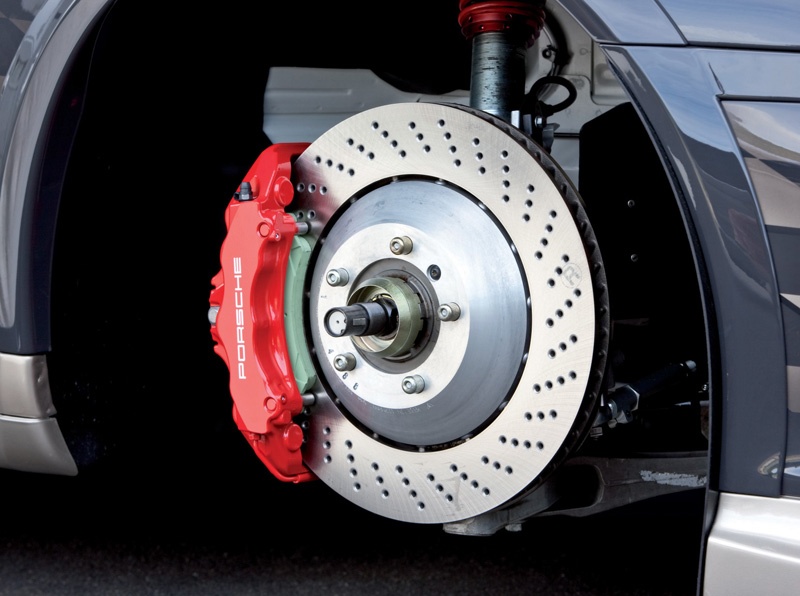Your car’s brakes are one of the most critical safety systems on the road. If they fail, the consequences can be life-threatening. That’s why regular brake maintenance is essential—not just for your vehicle’s health, but for your own peace of mind.
In this guide, we’ll cover the most common signs your brakes might need servicing, what causes these issues and what you should do if you notice them. Whether you’re a daily commuter or an occasional driver, understanding how to spot brake trouble early can help you avoid accidents and expensive repairs.
Why Brake Maintenance Matters
Brakes wear out over time. Every time you stop your vehicle, your brake pads, calipers and rotors experience friction. Eventually, they reach the end of their safe operating life. Ignoring the early signs of brake trouble can lead to:
- Longer stopping distances
- Reduced control in emergency braking situations
- Higher repair bills due to damage to other components
- Complete brake failure in extreme cases
That’s why it’s important to stay alert to subtle changes in how your car feels and sounds when you apply the brakes.

1. Unusual Brake Noises
Strange sounds are often the first sign that your brakes need attention. If you hear a high-pitched squeal or grinding noise when you apply the brakes, take action right away.
- Squealing: This usually means your brake pads are worn down. Many pads have a small metal indicator that creates this noise to alert you it’s time for replacement.
- Grinding: This sound can indicate that the brake pad is worn completely, allowing metal-to-metal contact with the rotor. This can damage the rotor and lead to more costly repairs.
- Clicking or knocking: These may suggest loose brake parts or issues with your calipers or mounting hardware.
If the sound happens consistently, even at low speeds, book an inspection as soon as possible. It’s better to replace worn pads than face a full brake system overhaul.
2. Brake Warning Light On Your Dashboard
Your dashboard has a warning light for the brake system for a reason. When this light comes on, it’s time to investigate. Here’s what it could mean:
- Low brake fluid level
- Worn brake pads (on newer cars with sensors)
- Handbrake still engaged
- Sensor or ABS (anti-lock braking system) issue
Even if it turns out to be a faulty sensor, don’t ignore it. Have a technician run a quick diagnostic to ensure your brakes are working properly. The light is there to protect you—let it.
3. Spongy or Hard Brake Pedal Feel
Your brake pedal should feel responsive and firm. If you notice a change in pedal pressure, it’s a clear signal something’s wrong:
- Spongy or soft pedal: Air may have entered the brake lines, or you might be low on brake fluid. This can reduce braking effectiveness significantly.
- Stiff or hard pedal: This could mean a problem with the brake booster or a restriction in the brake lines.
In both cases, the best course of action is to stop driving and get your car inspected. A delayed response when braking can cost you valuable stopping time.
4. Car Pulls to One Side When Braking
If your vehicle pulls to the left or right when you apply the brakes, this may be caused by:
- Uneven brake pad wear
- Stuck calipers
- Leaking brake fluid on one side
- Suspension issues (in some cases)
This pulling can throw off your control in traffic or during emergency stops. Even if it’s subtle, get it checked out before the issue worsens.
5. Vibrations or Shaking When Braking
A vibrating brake pedal or steering wheel when slowing down often points to warped brake rotors. This usually happens after heavy braking or long-term wear. While the vehicle may still stop, the vibration can increase stopping distance and cause more wear on your suspension.
Resurfacing or replacing the rotors typically solves the issue. It’s a relatively simple fix if caught early.
6. Burning Smell While Braking
A sharp, chemical-like burning smell during or after hard braking may indicate overheated brakes or clutch (if driving manual). This is a serious warning.
Stop your car safely, check the wheels, and let them cool down. Continuing to drive can damage brake components permanently or start a fire in extreme cases.
How Often Should Brakes Be Serviced?
There’s no universal schedule for brake maintenance because it depends on how and where you drive. However, most mechanics recommend having your brakes inspected every 10,000 to 15,000 miles or once a year. Brake pads often need replacing every 25,000 to 50,000 miles, depending on quality and driving conditions.
If you drive in stop-and-go traffic or regularly tow heavy loads, expect to service your brakes more often.
Can You Check Brakes Yourself?
If you’re comfortable doing some basic car maintenance, you can check:
- Brake fluid level (under the hood, in a clear reservoir)
- Brake pad thickness (visible through the wheel or after removing it)
- Rotor condition (look for deep grooves or scoring)
However, diagnosing more complex brake issues should be left to professionals. Modern brake systems include ABS, electronic sensors, and complex hydraulics that require proper tools and experience to repair.
Staying Safe Behind the Wheel
Brake problems rarely happen all at once. Most start with small signs—odd noises, changes in feel, or unusual smells. The earlier you spot the warning signs, the easier and cheaper it will be to fix them.
Make a habit of listening to your car. Do occasional test stops in a quiet car park. Take note of how it feels. Stay ahead of problems rather than reacting too late. Your safety—and that of your passengers—depends on it.
And if your gut tells you something’s wrong with your brakes, don’t wait. Book a brake inspection. It could save a life.